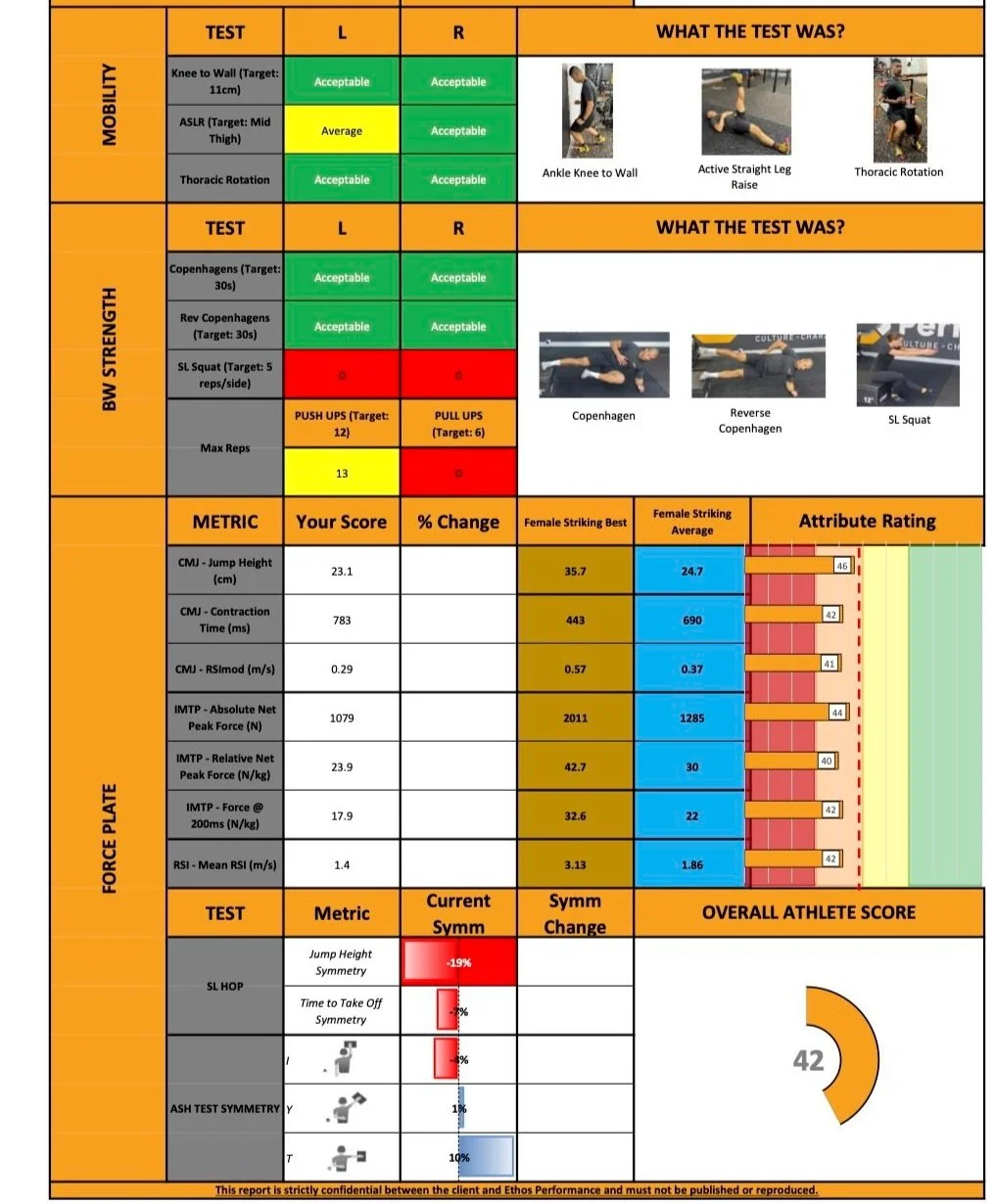5 Key Reasons WHY athletic performance testing is critical
As an athlete, you may have heard about or participated in “performance testing.” You might have been at a club or an organisation where it was just part of the process. You didn’t really know the reason why they wanted to test you in the first place and went along with the flow doing what you were told.
A lot of the time, when we are talking to athletes who are looking to join our Athlete Program, we get asked some of these questions:
1. What are the benefits of the testing session?
2. What will it tell me?
3. Will it identify my weaknesses?
4. How will it help my program?
5. Will I have to test again?
Alas, this blog will attempt to address these questions and hopefully, by the end of this blog, you will have a better understanding as to why we conduct Performance Testing at Ethos Performance.
1 - IDENTIFIES YOUR STRENGTHS AND WEAKNESSES
Performance Testing is an accurate way to identify your strengths and weaknesses as an athlete. The tests that we use at Ethos Performance measure your power, overall strength, reactiveness, and joint-specific strength (for example, shoulder, hip, neck) and aerobic/anaerobic fitness. This can be compiled into a report which can show you how you compare to athletes at our gym who compete in your respective sport. This report shows you what physical qualities make you a good athlete already and what you might need to address moving forward to make you the complete athlete.
What gets measured, gets managed. Without a structured testing process to evaluate your current level there is no chance of checking in with where you’re at for the long term.
Having a clear program is about understanding where you’re at with your current level of performance, as well as where you want to go. With Athletic testing you can clearly focus on the current most important things, while slowly building towards your ideal goal.
2 - ELIMINATE GUESSWORK IN PROGRAMMING
Following on from the above point, testing makes our jobs as strength and conditioning coaches easier! Experienced coaches can still write an effective program without performance testing but there would be more guesswork involved. Performance testing makes it clear for a coach as to what you specifically you need to work on as an athlete. For example, if the testing report says that you have world-class strength but poor in power then your coach will most likely include more exercises to improve explosiveness whilst still including dosages of maximal strength throughout the year. This is to ensure that you can address your deficiencies and maintain what makes you a good athlete already.
3 - MONITOR PROGRESS OF TRAINING
So, you’ve completed your first training block after 2-3 months and you’re feeling as strong and powerful as ever. However, this is purely subjective and although feelings are valid, objective information is required to confirm these beliefs. This is where Performance Testing comes in. You complete the testing and you find that you’ve improved your maximal strength and power has increased! Great, we’re on the right path! However, there can be instances where you find that your results have declined. Whilst this is not ideal, it allows you to re-evaulate and modify what you’re currently doing with your training both inside and outside of the gym.
4 - FLAG POTENTIAL INJURY RISKS
The technology used at Ethos Performance can assess force asymmetries on both left and right sides. Humans are naturally asymmetrical and when testing it’s 99% likely that one side will be more dominant than the other. However, asymmetry becomes a flag when you have sustained an injury as an athlete or if there are significant changes to your baseline asymmetry. Without testing, these asymmetries might be missed, and this could leave you out on the sidelines for a while. It’s impossible to prevent injuries altogether but using technology can help to address any potential injuries waiting to happen by strengthening and modifying the load or volume to that area.
5 - AN OPPORTUNITY TO CHALLENGE YOURSELF
Staying in your comfort zone is never going to make you a better athlete. The most successful athletes learn how to be comfortable being uncomfortable. Performance Testing is a process you can undertake to learn to push yourself outside of your physical boundaries. When I ask athletes on their thoughts of the testing session at the end, they usually report that “it was harder than they expected.” In saying that, the experience is always positive, and I can tell the athletes feel a great sense of accomplishment after completing the Testing Battery. Rather than seeing it as just another testing session, see it as an opportunity to challenge yourself!
Hopefully after reading this, you now have a more comprehensive understanding as to why Performance Testing is used within sports. Performance Testing is a service that is beginning to gain more traction and it’s great to see. I believe that educating athletes on these services will ultimately benefit them in the long run and lead them one step closer to fulfilling their athletic potential.
Haoson Nian



